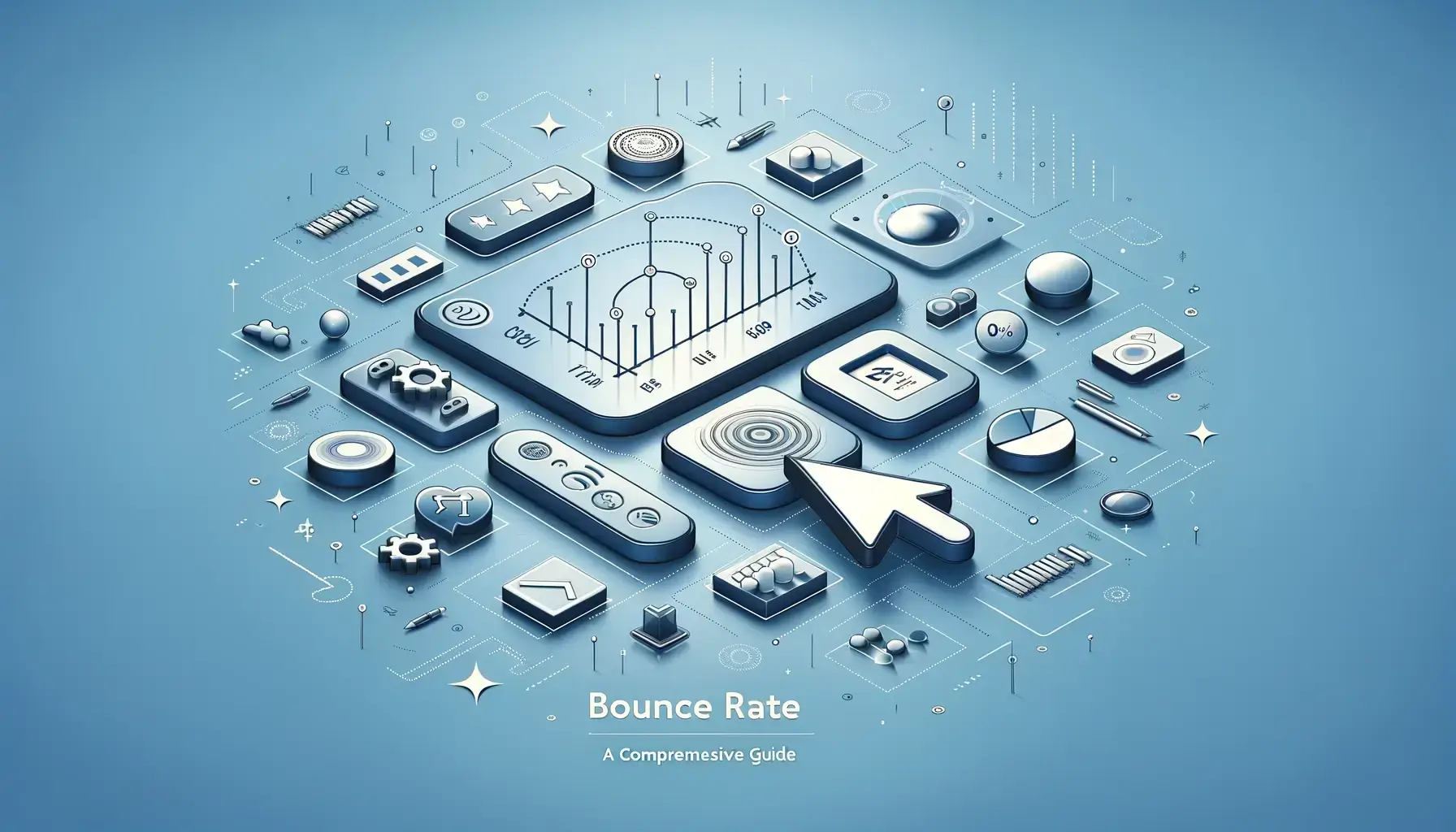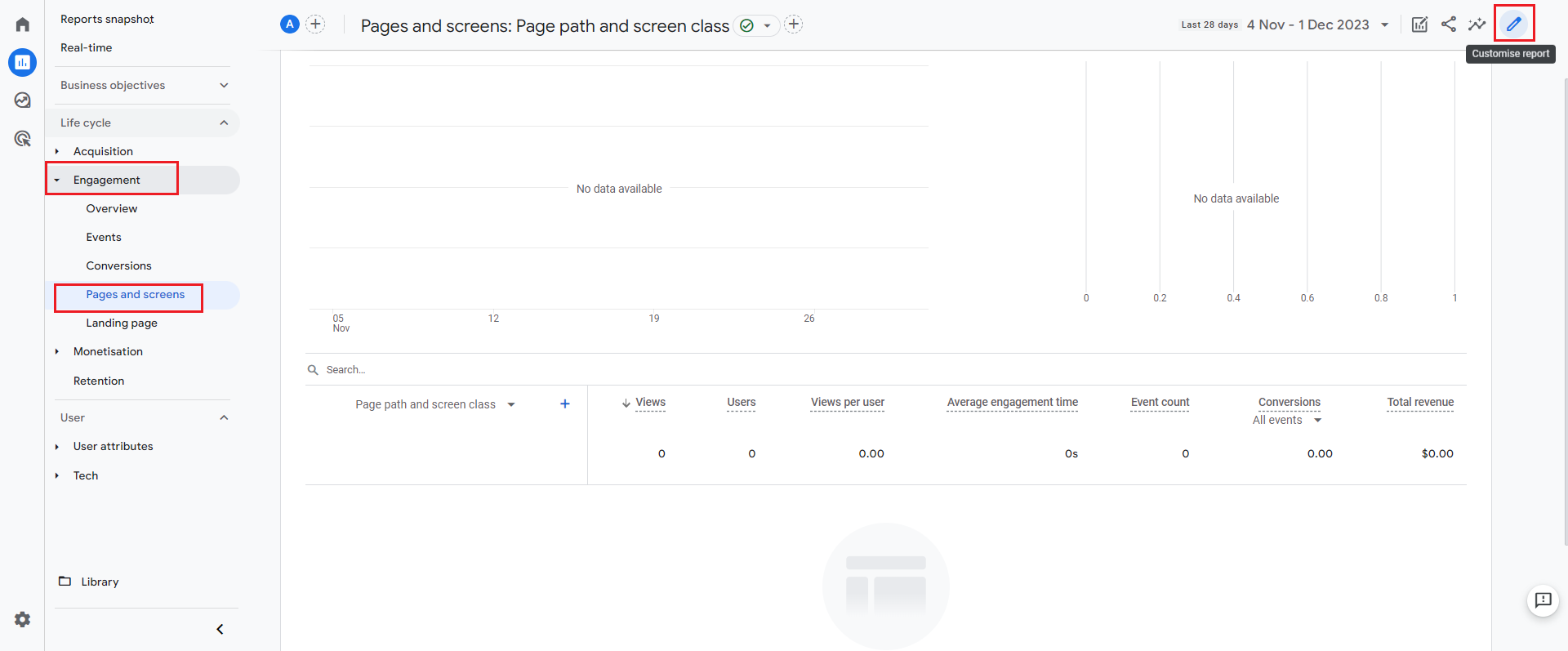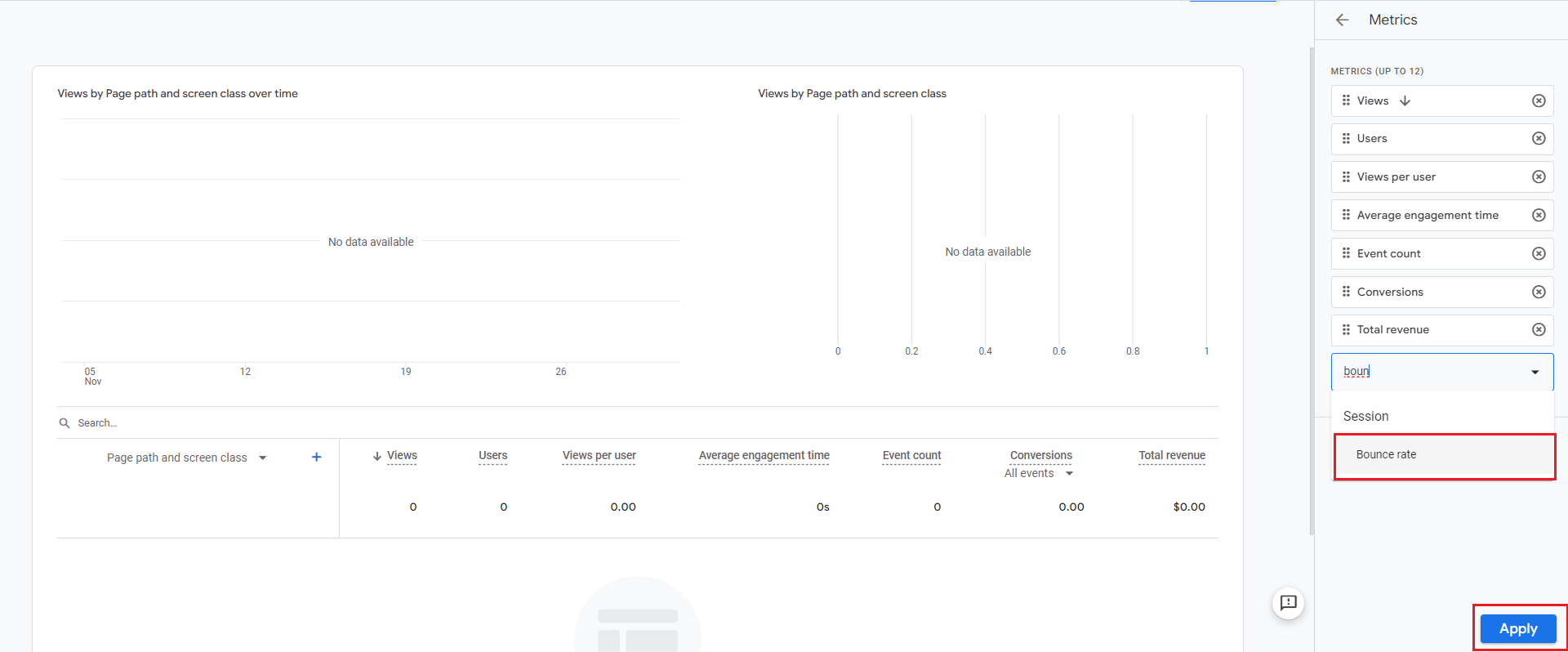GA4 Bounce Rate: A Comprehensive Guide

Table of Contents
Toggle
GA4 bounce rate, as traditionally understood in Universal Analytics, has been redefined in Google Analytics 4 (GA4). GA4 shifts focus to a more comprehensive understanding of user engagement, rather than solely tracking page exits. This is encapsulated in the concept of “Engaged Sessions,” providing a richer perspective on user interaction with websites.
GA4 Bounce Rate: The Evolution
The ga4 bounce rate is replaced by “Engaged Sessions”. This metric is defined by user visits that involve spending at least 10 seconds on the site, navigating two or more pages, or triggering a conversion event.
This transition from a binary view of user visits to a more nuanced approach allows businesses to gain a deeper understanding of user engagement.
| Aspect | UA Bounce Rate | GA4 Bounce Rate |
| Definition | A bounce occurs when a user visits a single page on your site and exits without triggering any other requests to the Analytics server. | GA4 does not use the traditional bounce rate metric. Instead, it focuses on engagement metrics like engaged sessions and engagement time. |
| Calculation Method | The bounce rate is calculated as the percentage of single-page sessions versus all sessions. | It is the opposite of the engagement rate calculated based on engaged sessions. It is the percentage of sessions that are engaged out of the total sessions. |
| Interpretation | A high bounce rate often suggests that the page wasn’t engaging enough to encourage further browsing. | A higher engagement rate indicates more meaningful user interaction with the site. It acknowledges that valuable engagement can happen even in single-page sessions. |
| Metric Focus | Focuses on single-page sessions without additional interaction. | Focuses on measuring the quality and level of user interactions, not just page views. |
| Insight on Engagement | Limited insight into user engagement. A high bounce rate is typically viewed negatively. | Provides a broader and more nuanced understanding of user engagement, recognizing various forms of interaction including time spent on site and events triggered. |
| Limitations | Does not account for the quality of engagement on a single page. For example, a user spending a long time on one page and leaving would still increase the bounce rate. | Requires a more complex analysis to understand user behavior, as it encompasses a wider range of interactions. |
| Alignment with User Behavior | Less aligned with modern web usage, where valuable engagement can occur on a single page. | More aligned with contemporary web usage patterns, recognizing that quality engagement can occur even if the user does not navigate to multiple pages. |
Accessing and Interpreting Engagement Metrics in GA4
GA4 user can access various engagement metrics in the following sections:
1. Engagement Reports: The “Engagement” section in GA4 provides in-depth reports on metrics like Engaged Sessions, Engagement Rate, and Average Engagement Time.


2. Custom Reports: GA4 allows the creation of custom reports, enabling businesses to focus on specific aspects of user engagement relevant to their needs. As mentioned in our previous blog post: GA4 Essentials: Utilizing the Report Library
3. Real-Time Reporting: This feature in GA4 offers immediate insights into user engagement, valuable for monitoring the impact of recent changes or initiatives.
How Businesses Can Benefit from Understanding Engagement Metrics
Looking at engagement metrics is very beneficial to businesses, as they can understand user’s behaviour and take action:
1. Enhanced User Behavior Analysis: GA4’s engagement metrics offer a more detailed understanding of how users interact with your site, enabling more informed business decisions.
2. Content Strategy Optimization: Engagement data is crucial for developing content strategies that resonate more effectively with your target audience.
3. User Experience Improvements: Insights from engagement metrics can guide enhancements in the user experience, potentially boosting key performance indicators like conversion rates.
4. Effective User Segmentation: The advanced segmentation capabilities in GA4 help in identifying the most valuable user groups, aiding targeted marketing efforts.
Leveraging Bounce Rate Insights for Business Growth
Bounce rate specifically is still considered an important metric! here is a list of nice actions businesses can take upong measuring engaged sessions behaviour using GA4:
1. Reducing Website Abandonment: Understanding the nuances behind engaged sessions helps businesses identify and address factors that contribute to website abandonment. By analyzing patterns in user behavior, businesses can implement targeted strategies to keep users engaged longer, thereby reducing bounce rates.
2. Enhancing Marketing Strategies: Engagement metrics can significantly influence marketing strategies. By understanding what keeps users engaged, businesses can tailor their marketing efforts to replicate successful elements, leading to more effective campaigns and better use of marketing resources.
3. Improving Conversion Optimization: Insights from GA4 can be instrumental in conversion rate optimization (CRO). Understanding the paths and behaviors of engaged users allows businesses to fine-tune their funnel strategies, leading to higher conversion rates.
4. Customer Insight and Retention: GA4 provides valuable data on what engages and retains customers. This information is vital for developing strategies that not only attract customers but also keep them coming back.
Conclusion
The switch from Universal Analytics (UA) to Google Analytics 4 (GA4) marks a fundamental shift in our understanding of web user behavior.
GA4’s more nuanced engagement rate like ga4 bounce rate (engaged session) replaces UA’s bounce rate, which primarily offered a basic view of single-page visits. This new metric provides a comprehensive view of user engagement, delving deeper into the quality of website interactions.
For businesses and marketers, transitioning to GA4 is a significant change, requiring a new approach to website analysis. The emphasis has now shifted from merely counting page views to gaining a more detailed understanding of how users interact with a site.